Christ
Church - The Round House - Every Street, Ancoats
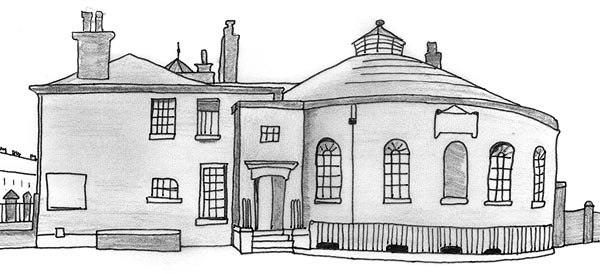
(Above: my rough sketch of the Round House based on the drawing by L S Lowry)

(Above: my rough sketch of the Round House based on the drawing by L S Lowry)
If you walk up Every
Street today from Great Ancoats Street you won't find
the Round House but you will find a brick circle on a
green space beside the road.


The story of the
Round House begins in the 1800s. In a talk
delivered to the Salford Local History Society in
1998 Derek Antrobus gave an insight into the "Roots
of Vegitarianism" in England. He told a story
about the Swedenborgian chapel in Salford that was
attracting large crowds of followers. These
crowds were drawn to listen to the charismatic
preacher William Cowherd. As Antrobus
explains, Cowherd, " didn't just talk of the
word of God but of the Rights of Man, of democracy
and liberty". On a particular Sunday
in 1809 Cowherd's sermon, " instructed
his congregation to abstain from meat". Ideological
rifts within the congregation of Swedenborgians led
Cowherd to split with them and start his own Bible
Christian Church. He
called his chapel Christ Church.
Antrobus tells us that, "Cowherd ministered to the sick and became known as Dr Cowherd. There was a soup kitchen for the poor and Cowherd's study served as a public library. With its provision of rudimentary welfare services, the church attracted large numbers of the working class created by the industrial revolution which had its hub in Manchester and Salford. And Cowherd preached the revolutionary politics of Tom Paine from his pulpit. Belief in human equality and liberty, democracy and cooperation, was the logical consequence of a religion which venerated all life as holy. Members of the vegetarian church were also political radicals."
Cowherd died in 1819 and his successor was Joseph Brotherton, who would later become Salford's first MP. Brotherton's statue stands near Bridge Street on the Manchester side of the Irwell looking towards Salford.
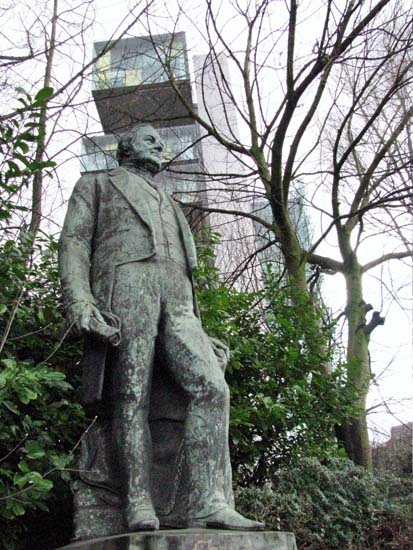
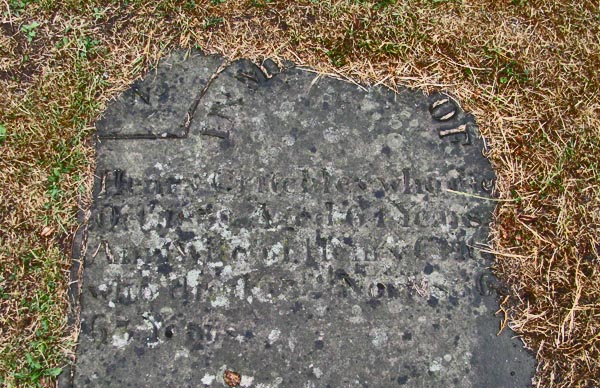
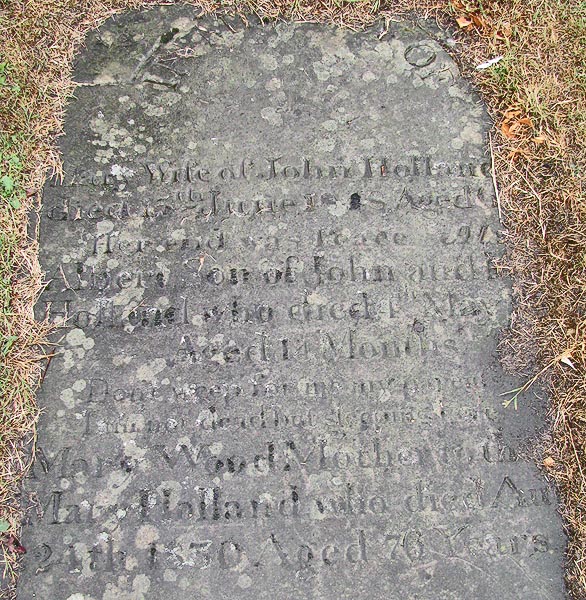
There is also a stone plaque embedded in the wall on the eastern side. It is similarly difficult to decipher.
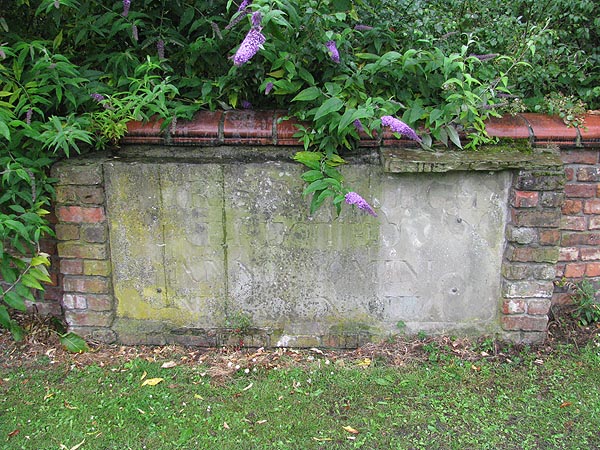
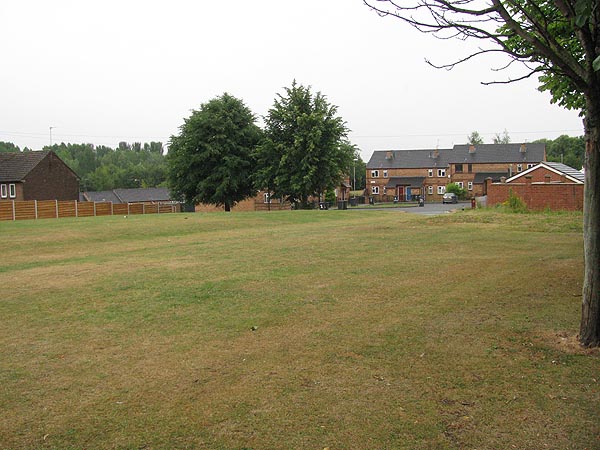
The photograph below looks south east and in the distance you can see the Ardwick Lads Club Building.
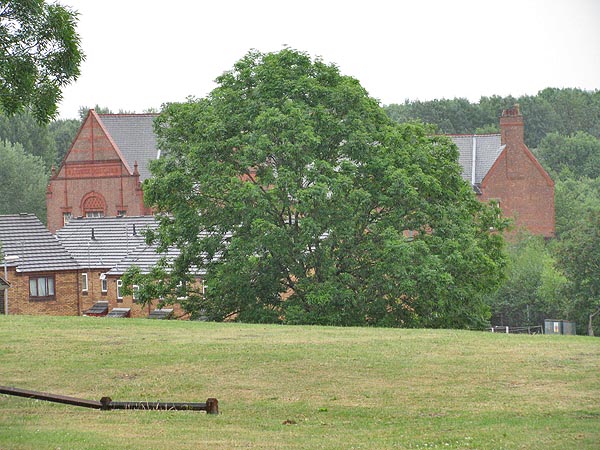
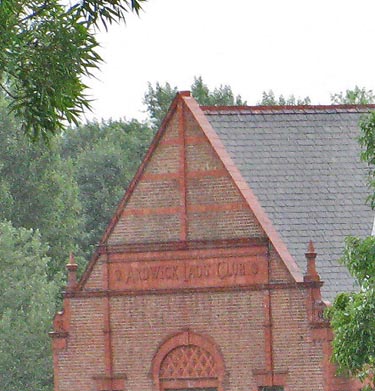
The Manchester Settlement lives on and they recently moved into a new home on Ashton Old Road, which they have called the New Roundhouse. The irony of this name is that this Roundhouse is actually square!
Close Window
Antrobus tells us that, "Cowherd ministered to the sick and became known as Dr Cowherd. There was a soup kitchen for the poor and Cowherd's study served as a public library. With its provision of rudimentary welfare services, the church attracted large numbers of the working class created by the industrial revolution which had its hub in Manchester and Salford. And Cowherd preached the revolutionary politics of Tom Paine from his pulpit. Belief in human equality and liberty, democracy and cooperation, was the logical consequence of a religion which venerated all life as holy. Members of the vegetarian church were also political radicals."
Cowherd died in 1819 and his successor was Joseph Brotherton, who would later become Salford's first MP. Brotherton's statue stands near Bridge Street on the Manchester side of the Irwell looking towards Salford.

The Bible
Christian movement prospered and in 1824 a new
branch opened a chapel on Every Street in
Ancoats. As you can see from the map
below, from 1851, the chapel was round and it
sat within a "burial ground". (The extract
below from the Adshead Map is shown with the
permission of Chetham's Library). The
church was called Christ Church but for obvious
reasons it was called the Round House.
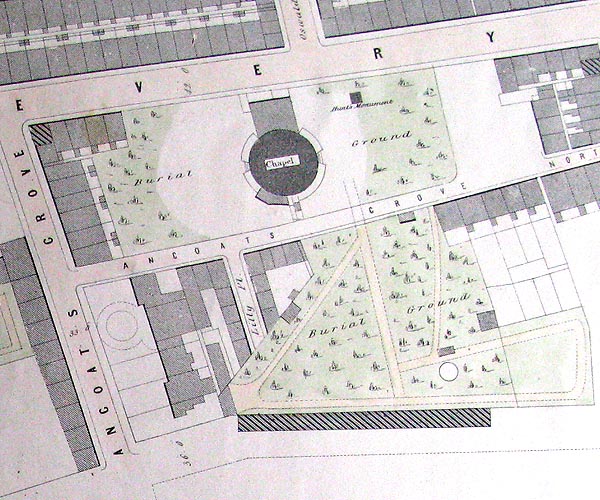

I don't know
the exact details of what happened next but I
have seen a reference to the fact that Christ
Church closed in 1880, at some point after
that the building passed into the hands of the
Salvation Army. Then in 1897 the
Manchester University Settlement was
founded. The first University Settlement
was established in London, in Toynbee Hall in
Whitechapel. The idea was, "that men and women from
Universities lived amongst the poor and help
remove some of the inequalities of life."
The Manchester University
Settlement established itself initially in
Ancoats Hall and the nearby Round House.
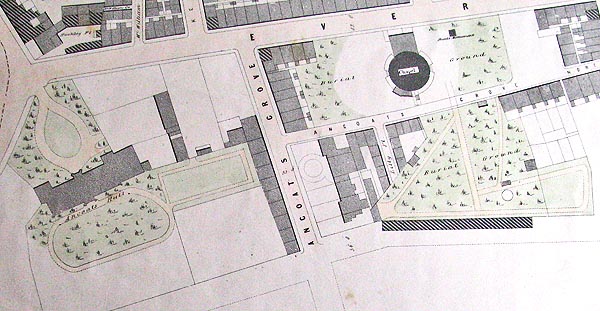
The Round House provided a large recreation room for plays and dances and an outdoor playground. In 1963 the Settlement moved out of Ancoats Hall and the building was subsequently demolished. The Round House was itself demolished in 1986.
If you visit the site today you will see the brick circle which marks its location. Arranged around it are a number of gravestones, remnants, I suppose, of the former burial ground.
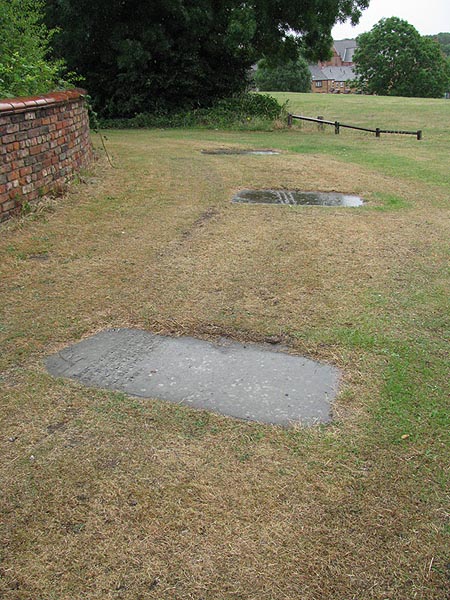
The stones are difficult to read.

The Round House provided a large recreation room for plays and dances and an outdoor playground. In 1963 the Settlement moved out of Ancoats Hall and the building was subsequently demolished. The Round House was itself demolished in 1986.
If you visit the site today you will see the brick circle which marks its location. Arranged around it are a number of gravestones, remnants, I suppose, of the former burial ground.

The stones are difficult to read.


There is also a stone plaque embedded in the wall on the eastern side. It is similarly difficult to decipher.

The grassed area
around the former Round House is a remnant of
the old burial ground. The houses in the
background, of the image below, are built close
to the site of the former Ancoats Hall.

The photograph below looks south east and in the distance you can see the Ardwick Lads Club Building.


The Manchester Settlement lives on and they recently moved into a new home on Ashton Old Road, which they have called the New Roundhouse. The irony of this name is that this Roundhouse is actually square!
Close Window